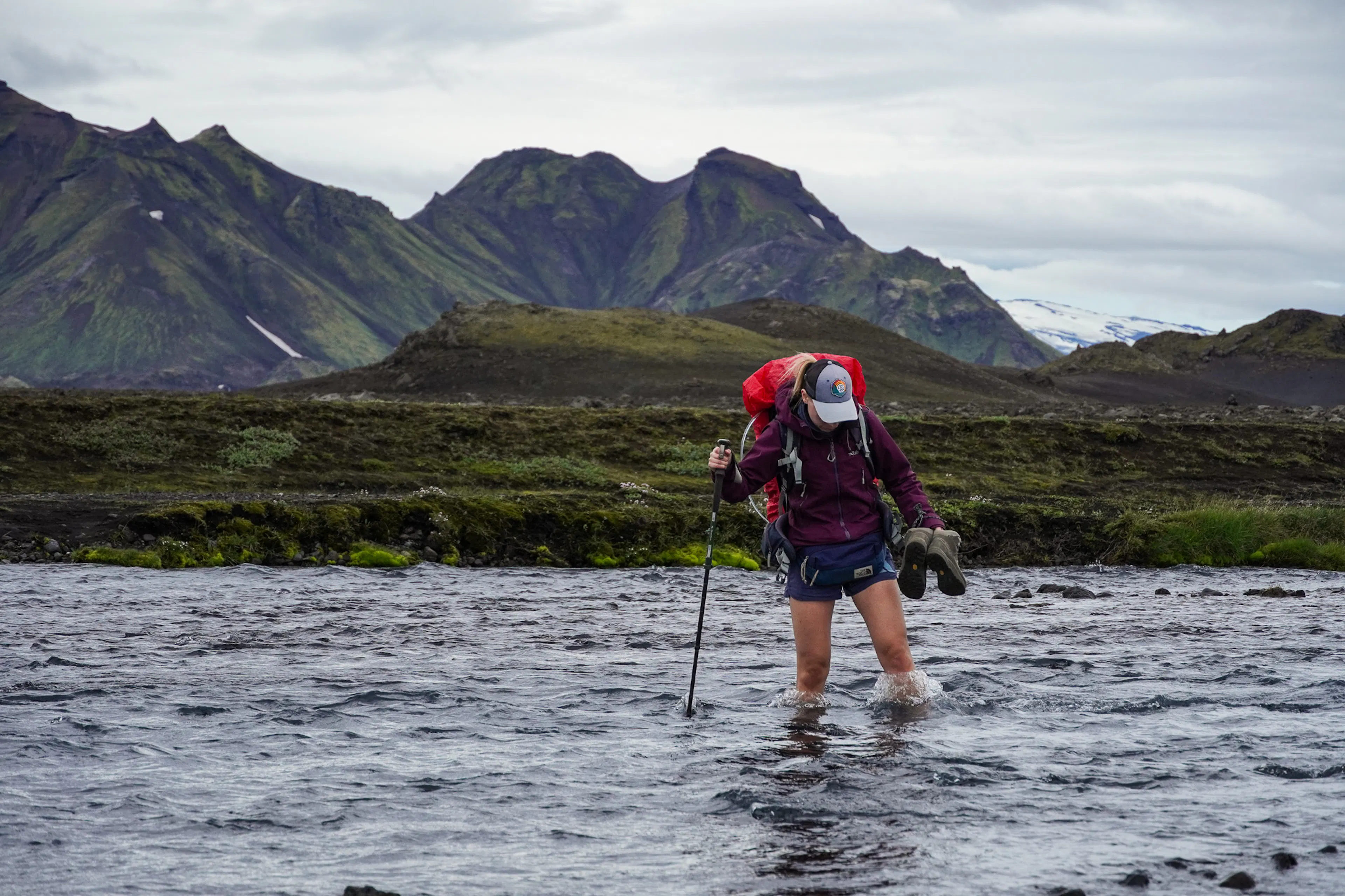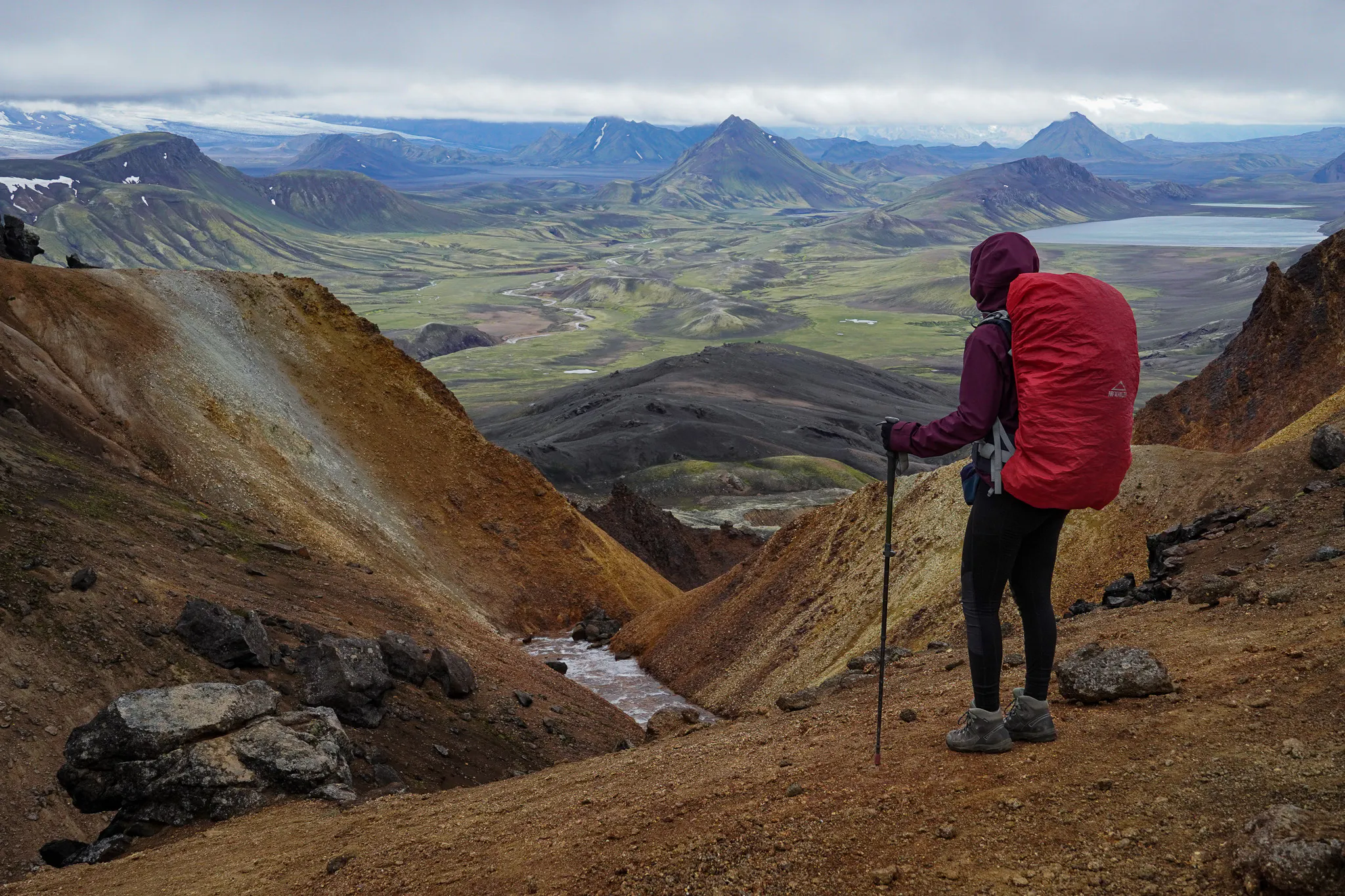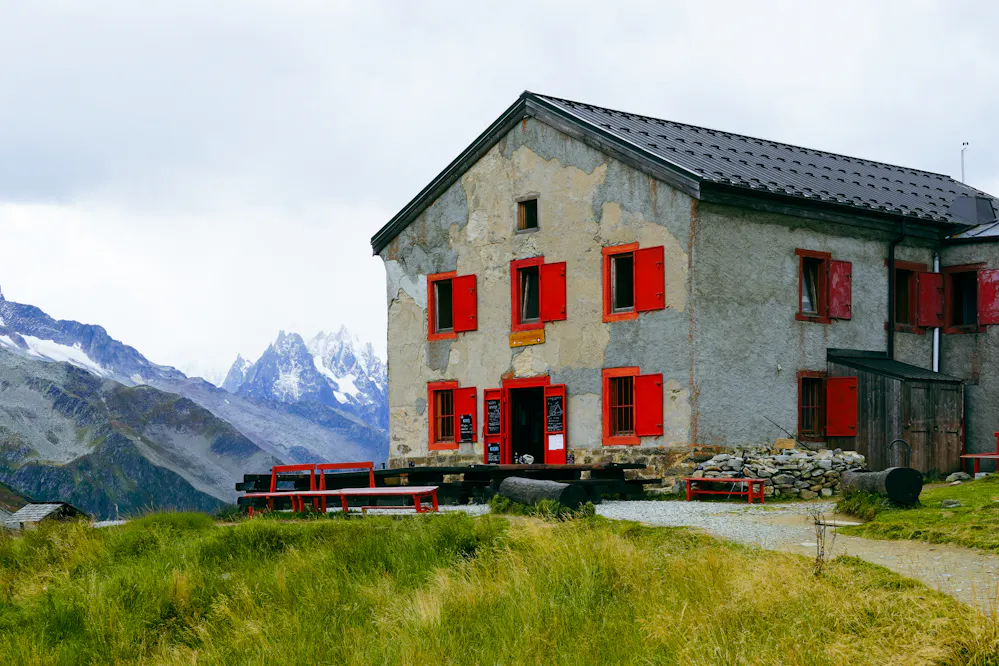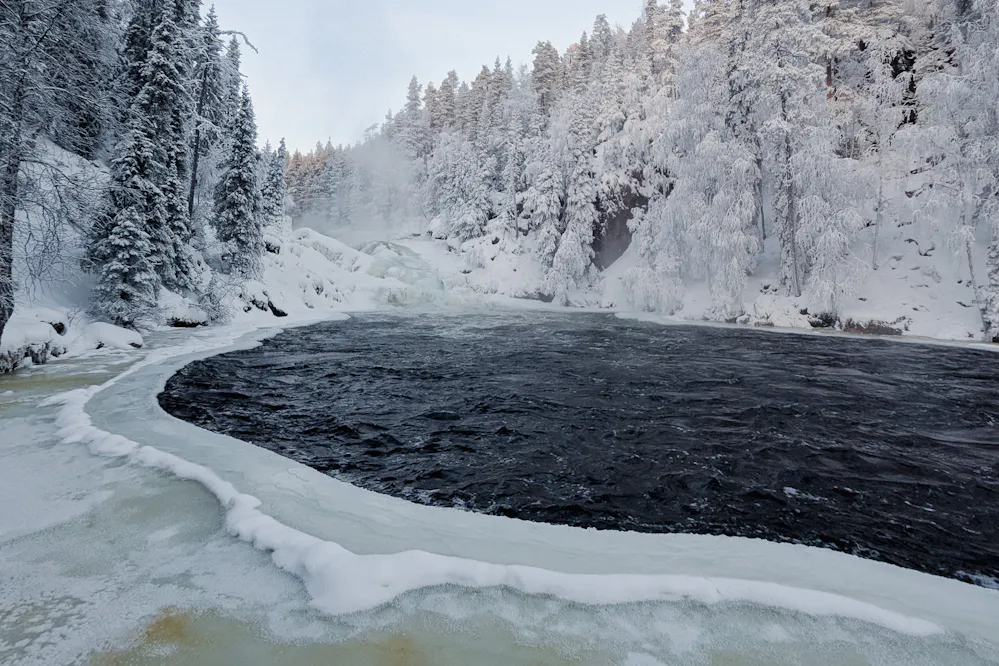Hiking in Iceland is an unforgettable experience. You’ll cross glaciers, lava fields, volcanic craters, waterfalls, and rivers—and find yourself surrounded by landscapes that feel completely out of this world. But it can also be very challenging, especially because of the weather.
Even though hikes in Iceland don’t usually take you to high altitudes, they’ll often take you through hostile environments—with strong winds, heavy rain, freezing river crossings, and limited visibility. So this is one place where being well prepared makes all the difference between enjoying the views or suffering through the trail.
In this post, we’re sharing what it was like hiking in Iceland (we did the Laugavegur Trail and Fimmvörðuháls) and what gear you absolutely need to be ready for it.
How Bad Is the Weather?
When we first started researching hikes in Iceland, the one thing that came up again and again was how unpredictable the weather can be. People say you can experience all four seasons in one day, and they’re not exaggerating.
The first thing you should do is check the safetravel.is website and consider downloading their app. It gives weather updates, alerts, and trail conditions. It’s a must.
The best season for hiking in Iceland is July and August, when the trails are more accessible and the huts are open. If you’re experienced and don’t mind tougher conditions, it is also possible on late June to mid-September.
We went in late July, and on some days, temperatures didn’t go above 10°C, with constant rain. It was actually the hike where we made the fewest stops for snacks and rest breaks, simply because it was too cold and wet to hang around for long. Locals told us that wasn’t a typical summer, but still, don’t expect those hot days in the mountain like you’d get hiking in the Alps. Even in good years, Icelandic summer is still… Icelandic.
The wind, your worst enemy
If you rent a car in Iceland, you’ll probably see a sticker on the door warning you to hold it tight when opening. That’s not a joke, the wind can literally rip your car door off, and most insurance won’t cover it.
Winds of 70 km/h (or more) are totally normal in many parts of the island. In the highlands, wind can make it feel much colder and even turn simple trails into dangerous ones. Thankfully, most hikes like Laugavegur don’t have exposed climbs, but strong gusts can still throw off your balance or blow your gear away.
Make sure:
- Your backpack is tightly secured, with no loose straps or hanging gear. Also if it is not waterproof, make sure you have a rain cover. Keeping your gear dry is super important, there’s no guarantee you’ll get any sunshine to dry things out along the trail.
- You have a waterproof and windproof jacket, pants, and gloves. These are absolutely essential, not just for staying dry, but for keeping warm when the wind picks up.
- You have a buff or neck warmer, which you can pull over your face and neck for extra protection from cold gusts.
We personally struggled to keep our hands warm at higher elevations and regretted not bringing our thicker gloves. If you get cold easily, don’t risk it, bring the warm stuff.
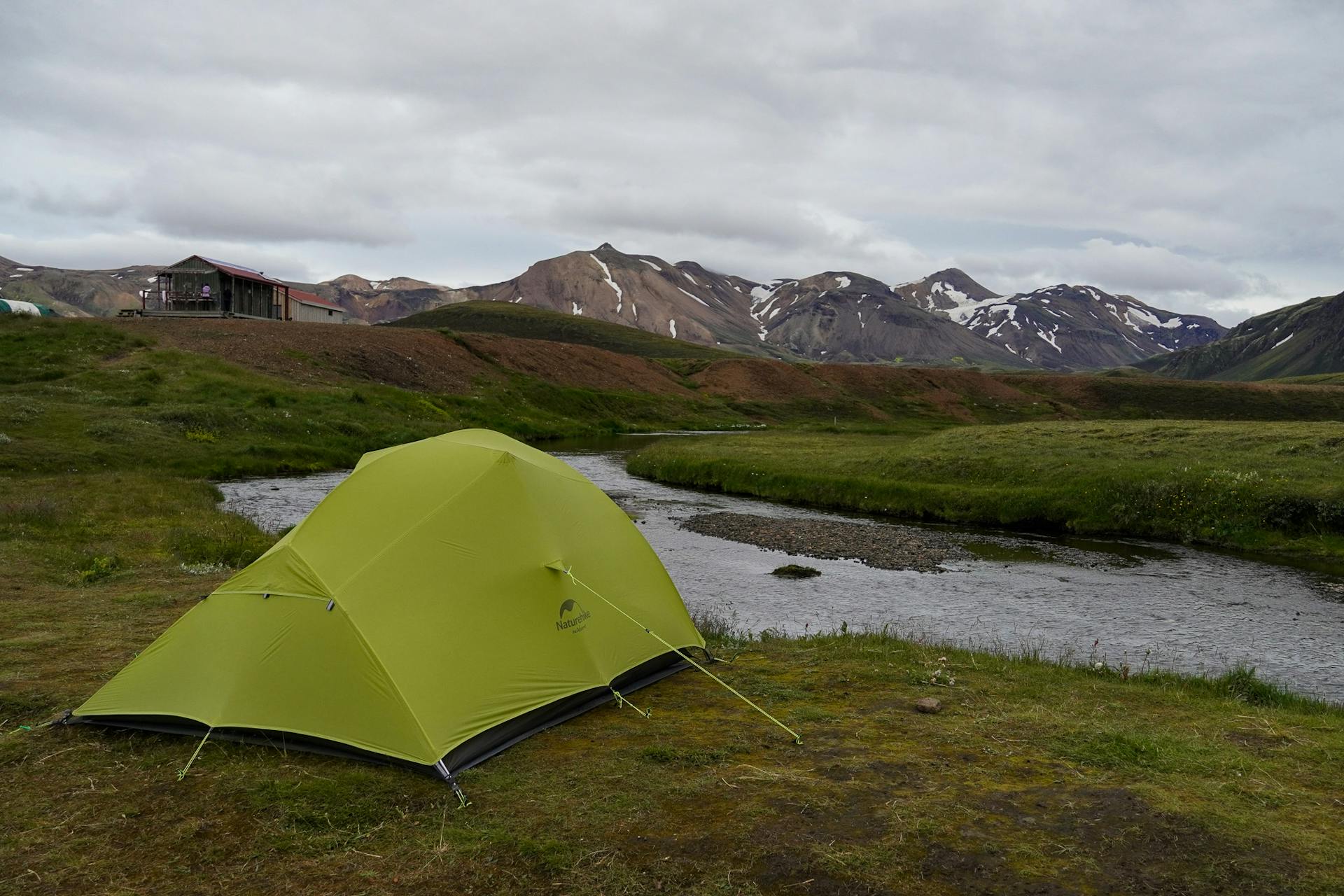

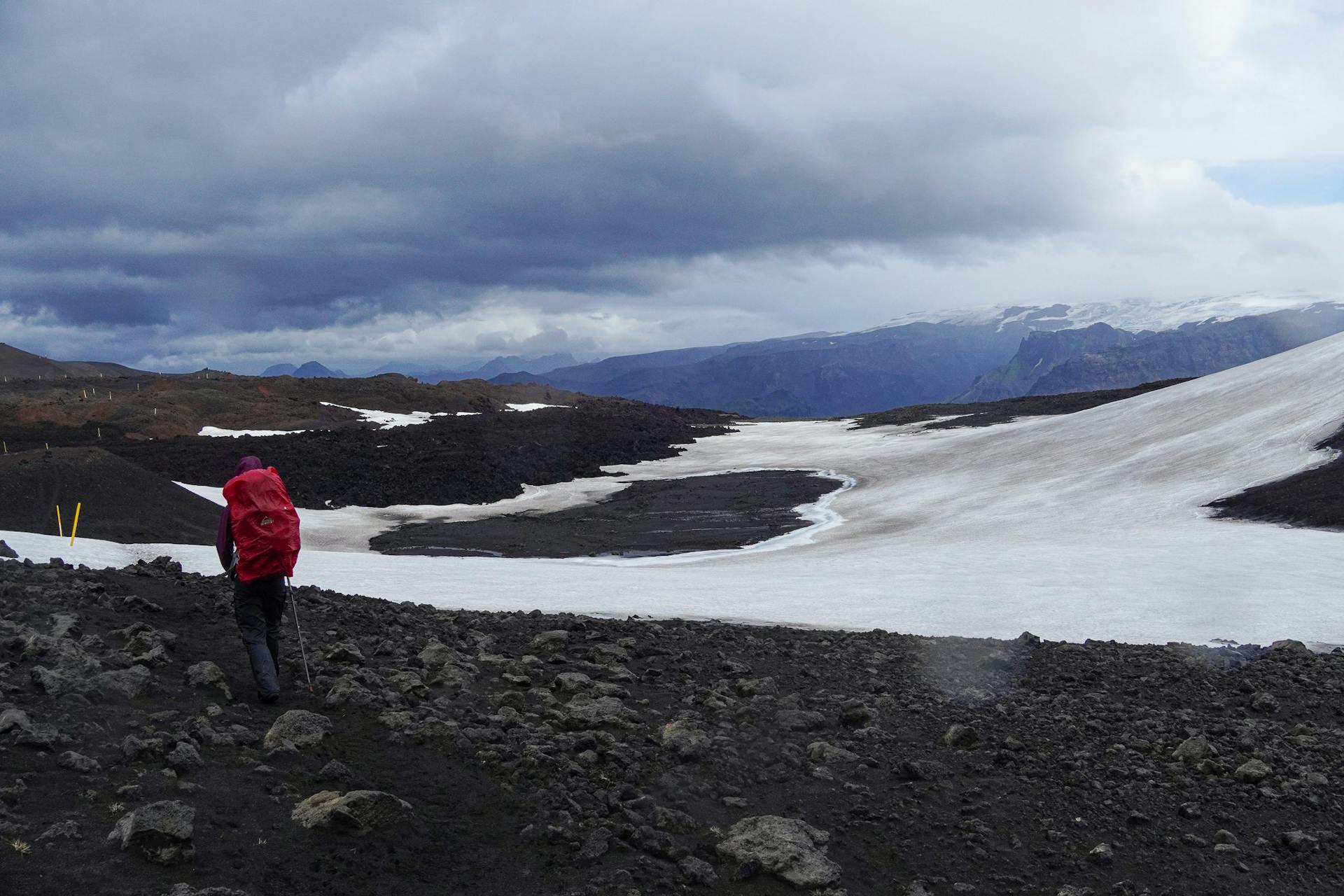
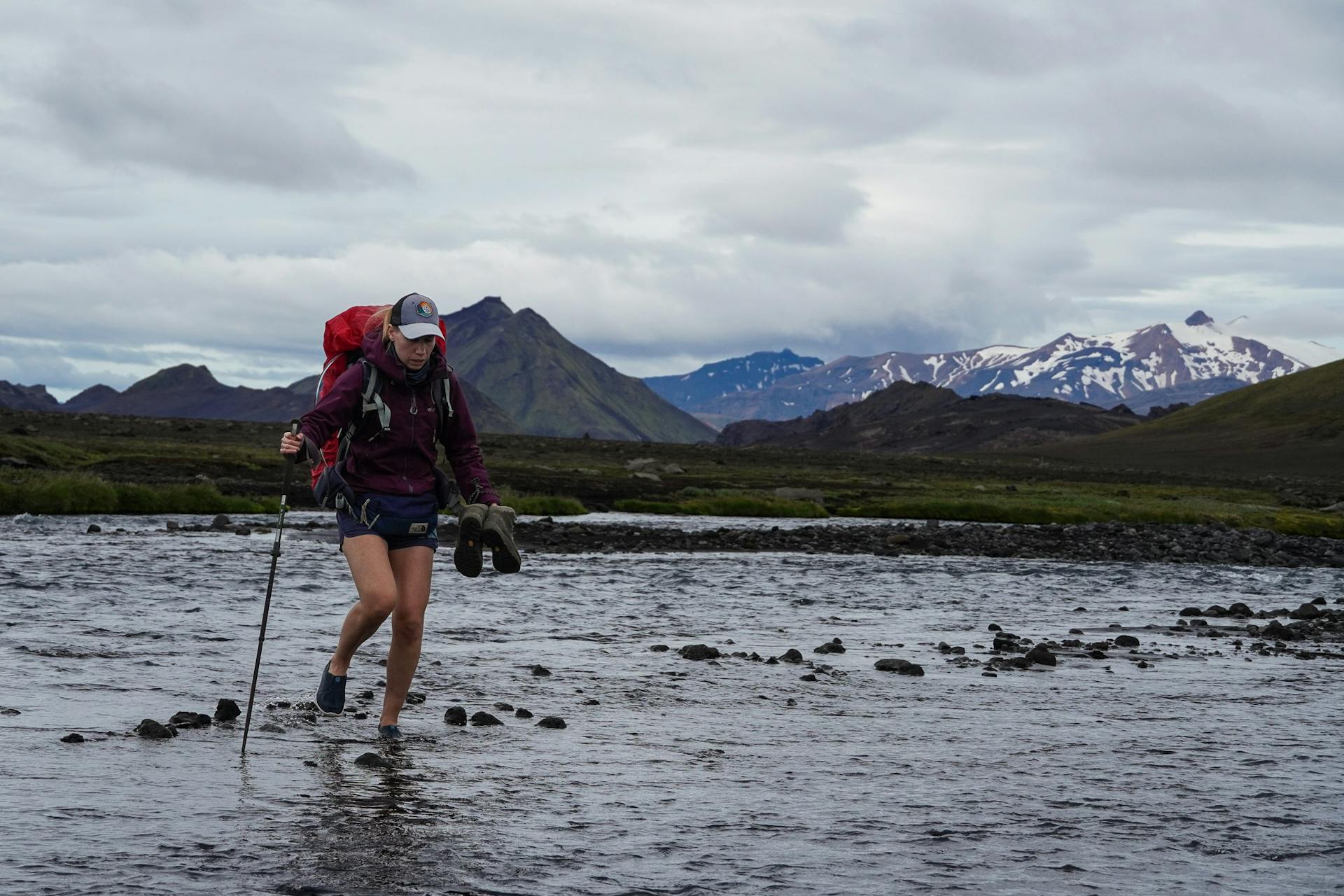
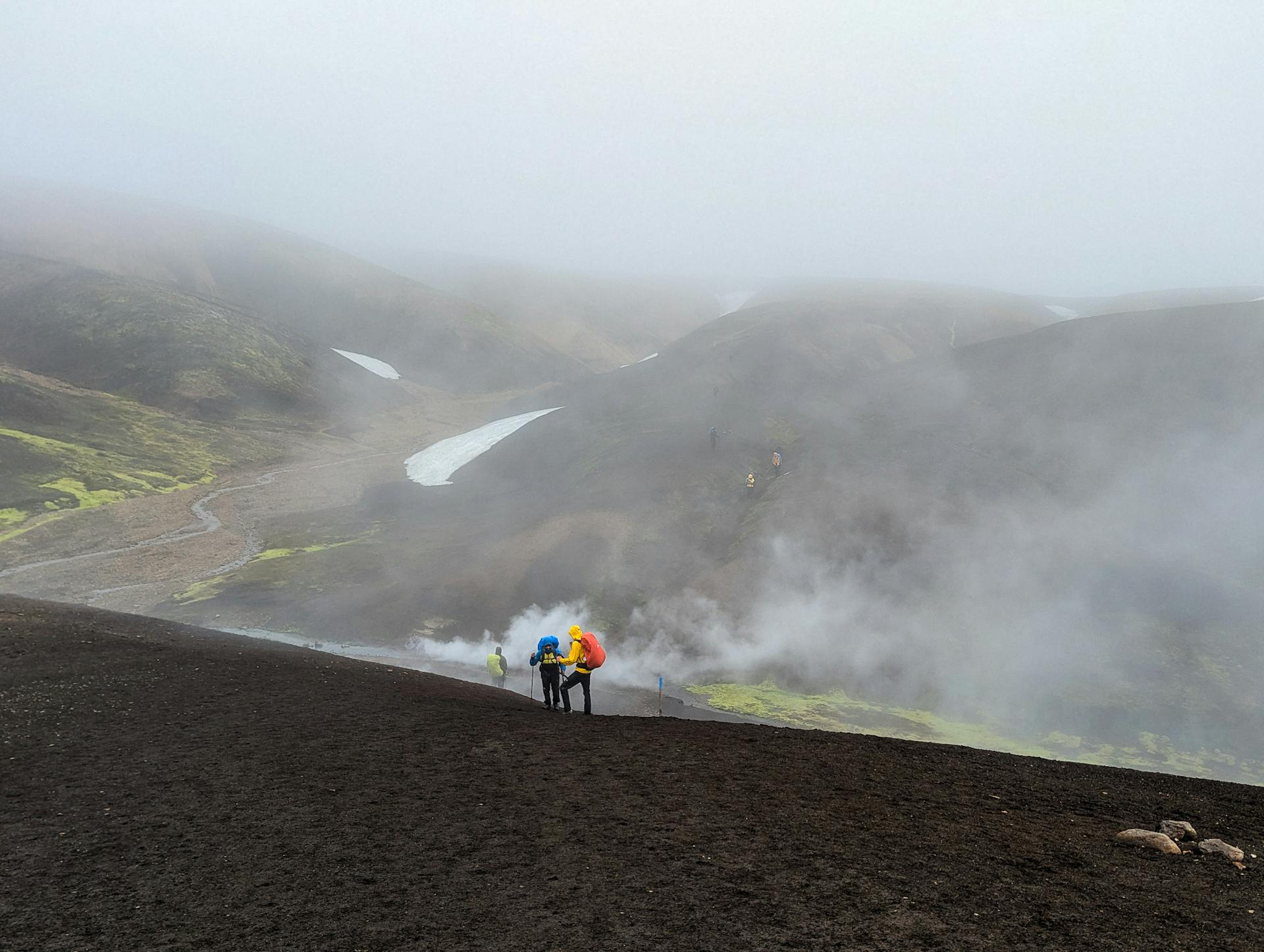
Camping in Iceland
Iceland has plenty of official campsites, even along popular hiking trails. Camping is also the most budget-friendly way to explore the country—since even basic huts or hotels can be really expensive.
If you’re planning to camp along your hike, you’ll need to be extra careful with your tent setup:
- Choose a high-quality tent with a strong rain cover and solid wind resistance.
- Make sure the tent is fully stretched and well anchored. Use all the extra strings, and don’t be afraid to use rocks to stabilise it.
- Be extra cautious when setting up or taking down your tent. If the wind is too strong, wait it out. We saw tents flying or being completely destroyed more than once. Trust us, you do NOT want to lose your shelter halfway through a multi-day hike.
- Try to avoid camping in the highest spots like Fimmvörðuskáli and Hrafntinnusker, since it can be very hostile with very strong winds.
- Don’t expect many facilities at the campsites along the trail. Most of them don’t have kitchens, restaurants, or even a covered area to hang out in bad weather. Your tent will most likely be your only shelter.
River Crossings
This is one of the biggest concerns for hikers in Iceland: the rivers. On many trails, especially Laugavegur, there are no bridges for some crossings. We honestly didn’t think it was as bad as people made it sound, but it really depends on the season, melting conditions, and recent rain.
Tips for safe river crossings:
- Take a few minutes to study the river before entering. Look for the shallowest spot and weaker currents. If possible, let someone else cross first to see how deep it gets.
- Use trekking poles for balance, or if you’re with someone, you can also cross together, linking arms.
- Decide whether to cross with or without boots. Barefoot is slippery, but soaking your boots isn’t great either. Our solution? We brought water shoes with good grip. At each river, we changed shoes, crossed, dried our feet with a towel, and put our boots back on. Yes, it takes time, but it keeps your feet dry (and warm) for the rest of the day.
Also, remember these rivers are filled with glacier meltwater. The water is freezing cold, and if your boots get soaked, it can be hard to warm up again.
Like the Nordics say: “There’s no bad weather, only bad clothing.”
So don’t be afraid to hike in Iceland, just bring the right gear, stay flexible, and be prepared for the elements. It’s truly one of the most unique places we've ever hiked, and every challenge with the weather was worth it for the landscapes we saw.
And one last recommendation: don’t miss out on the hot springs. After days of cold wind and rain, soaking in a natural hot pool is absolute bliss, especially the one in Landmannalaugar. It was one of the main reasons we chose to do the Laugavegur Trail in reverse, so we could finish the hike with a well-deserved reward.
If you’re planning to hike the Laugavegur and Fimmvörðuháls trails, check out our interactive guide with detailed stages, GPS files, photos, and extra info to help you plan your trip.
